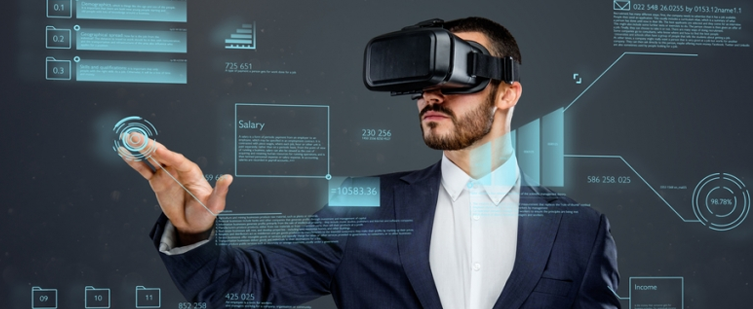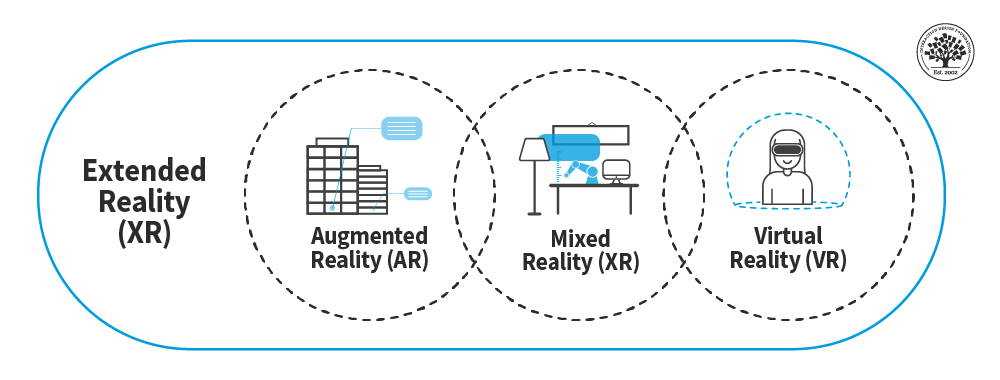Welcome to our blog, where we delve into the limitless possibilities of immersive experiences through Virtual Reality Integration. The fusion of technology and creativity has unleashed a new era of interactive simulations that are redefining industries across the globe. Virtual Reality Integration allows users to step into a virtual world, bridging the gap between imagination and reality like never before. From gaming and entertainment to education and training, the applications are diverse and transformative. In this blog, we will explore how Virtual Reality Integration is revolutionizing the way we perceive and engage with digital environments, opening doors to a realm of endless opportunities.

Introduction to Virtual Reality Integration
Virtual Reality Integration is the process of incorporating virtual reality technology into various applications, creating immersive and interactive experiences for users. This integration allows users to engage with a simulated environment that feels realistic and lifelike, providing a sense of presence and interaction unlike any other technology.
The Evolution of Virtual Reality
Virtual reality technology has come a long way since its inception, evolving from bulky headsets and limited graphics to sleek, high-definition displays and advanced motion-tracking capabilities. This evolution has made VR integration more accessible and versatile, opening up a world of possibilities across industries.
Benefits of Virtual Reality Integration
Integrating virtual reality into applications offers numerous benefits, including enhanced user engagement, increased knowledge retention, and improved training simulations. Virtual reality can also help businesses showcase products more interactively and boost customer satisfaction.
Enhanced User Experience
By immersing users in a virtual environment, VR integration enhances the overall user experience, making interactions more memorable and engaging. This increased engagement can lead to improved conversion rates and customer loyalty.
Revolutionizing Training and Education
Virtual reality integration is revolutionizing the way training and education are conducted, offering realistic simulations that allow users to practice skills in a safe and controlled environment. This technology is being utilized in fields such as healthcare, aviation, and manufacturing to train professionals effectively.

The Impact of Virtual Reality on User Experiences
Virtual Reality integration is revolutionizing user experiences across various industries. By creating immersive environments that transport users to virtual worlds, VR is reshaping how individuals interact with content and technology.
Enhanced Engagement and Interactivity
Virtual Reality goes beyond traditional user interfaces, offering users a truly interactive and engaging experience. With the ability to manipulate and explore virtual environments in real time, users are actively involved in their digital interactions, resulting in heightened engagement levels.
Moreover, VR facilitates hands-on learning experiences, allowing users to interact with content more intuitively and memorably. This hands-on approach enhances knowledge retention and deepens the overall understanding of complex subjects.
Immersive Storytelling and Emotional Connection
One of the key impacts of Virtual Reality is its ability to create deep emotional connections through immersive storytelling. By placing users at the center of narratives and experiences, VR elicits stronger emotional responses and fosters empathy and understanding.
Whether experiencing a historical event, exploring a virtual museum, or embarking on a thrilling adventure, VR allows users to step into the shoes of characters and connect with content on a whole new level, making storytelling more impactful and memorable.

Benefits of Implementing Virtual Reality in Various Industries
Virtual Reality Integration offers a plethora of benefits across various industries, revolutionizing the way businesses operate and how consumers interact with products and services.
Enhanced Training and Simulation
Virtual Reality technology enables immersive training experiences, allowing employees to practice real-life scenarios in a safe and controlled environment. This is particularly beneficial in industries such as healthcare and manufacturing.
Furthermore, simulations in VR can reduce training costs and improve knowledge retention and skill development.
Improved Customer Engagement
The use of Virtual Reality in marketing and sales enhances customer engagement, providing a more interactive and personalized experience. Customers can visualize products in 3D or experience virtual tours, leading to increased sales and brand loyalty.
- Virtual Reality Integration transforms traditional advertising into memorable experiences
- VR experiences enable customers to make informed purchasing decisions
Challenges and Solutions in Virtual Reality Integration
Virtual reality integration presents various challenges that need to be addressed to ensure a seamless and immersive experience for users. One of the main challenges is the hardware requirements, as VR demands high-end equipment which can be expensive for many users.
Hardware Compatibility
Ensuring hardware compatibility across different devices and platforms is crucial for a wider reach. This can be resolved by developing VR applications that are compatible with a range of devices and offer scalability.
Another solution is to create cloud-based VR solutions where the heavy processing is done on remote servers, reducing the hardware requirements for the end users.
User Experience Design
Designing an intuitive and user-friendly interface is essential for a successful VR integration. Solutions involve conducting user testing and feedback sessions to refine the interface and make it more user-centric.
Implementing natural interaction methods such as hand gestures and voice commands can enhance the user experience and make the interaction more intuitive.
Best Practices for Creating Immersive Virtual Reality Experiences
Virtual Reality Integration offers boundless opportunities for creating immersive experiences that captivate audiences. To ensure your VR experiences stand out, following best practices is crucial.
1. Engage Multiple Senses
Immerse users by engaging multiple senses. Incorporate not just visuals but also sound, touch, and even smell where possible to create a truly immersive environment. Engaging all senses enhances the realism of the experience.
2. Prioritize User Interaction
Encourage user interaction within the virtual environment. Design experiences that allow users to manipulate objects, move around freely, and engage with the surroundings. Interaction enhances engagement and makes the experience more memorable.
Frequently Asked Questions
What is virtual reality integration?
- Virtual reality integration refers to the incorporation of virtual reality technology into a particular environment or system to create immersive experiences for users.
How does virtual reality enhance user experiences?
- Virtual reality enhances user experiences by providing a simulated environment that users can interact with and explore through the use of specialized equipment such as VR headsets and controllers.
What are some common applications of virtual reality integration?
- Virtual reality integration is commonly used in areas such as gaming, training simulations, education, healthcare, architecture, and entertainment to provide engaging and realistic experiences.
What are the benefits of utilizing virtual reality integration?
- The benefits of utilizing virtual reality integration include increased engagement, improved learning outcomes, enhanced training effectiveness, realistic simulations, and the ability to create memorable experiences for users.
How can businesses leverage virtual reality integration for marketing purposes?
- Businesses can leverage virtual reality integration for marketing purposes by creating interactive and immersive experiences that allow customers to experience products or services in a virtual environment, leading to increased engagement and brand awareness.
Final Words
As we delve into the world of immersive experiences and virtual reality integration, the possibilities are truly limitless. The seamless blending of virtual and physical worlds offers a gateway to transformative experiences in various industries, from gaming to healthcare and education.
By embracing virtual reality integration, businesses can enhance customer engagement, streamline processes, and drive innovation. The ability to create realistic simulations and interactive environments opens up a new realm of possibilities for training, product visualization, and communication.
Ultimately, virtual reality integration is not just a trend but a game-changer that has the potential to revolutionize how we interact with technology and each other. So, let’s embark on this exciting journey and harness the full potential of virtual reality integration!
